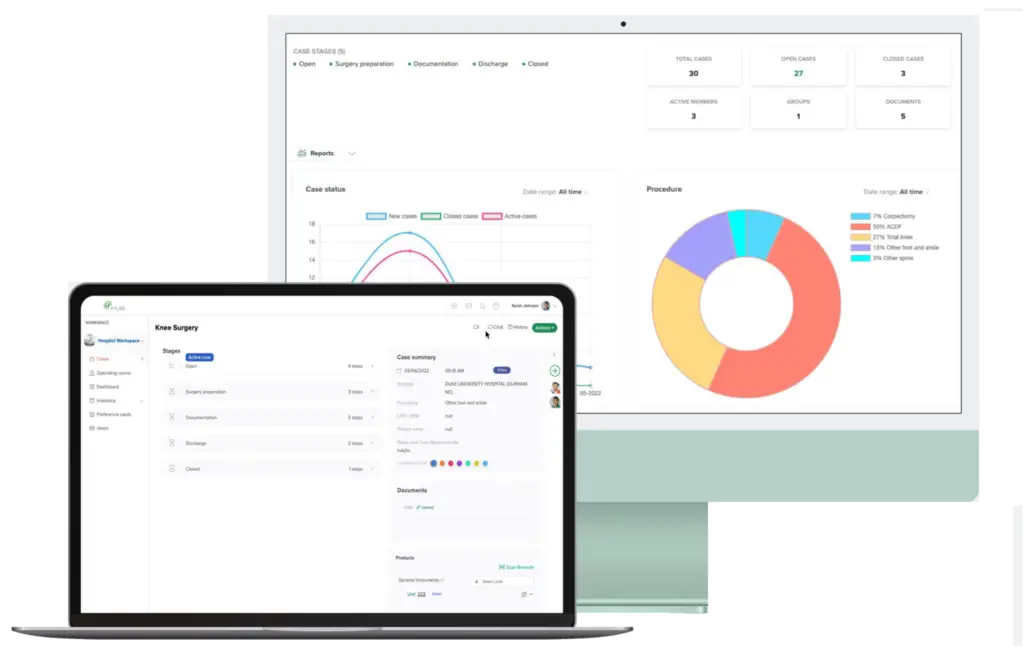The healthcare landscape is rapidly evolving, and traditional hospital care models face significant challenges such as high costs, inefficiencies, and patient dissatisfaction. The need for innovative solutions has led to exploring alternative care models, such as hospital-level care at home. This approach aims to provide acute medical services in the comfort of a patient’s home, reducing costs and improving the quality of care. A pilot study titled “Hospital-Level Care at Home for Acutely Ill Adults: a Pilot Randomized Controlled Trial” by David M. Levine et al. (2018) explores this concept’s feasibility and potential benefits.
Understanding Hospital-Level Care at Home
The hospital-level care at home model involves delivering comprehensive medical care to acutely ill patients in their own homes. This care includes physician and nurse visits, intravenous medication administration, continuous monitoring, and point-of-care testing. The model is designed to replicate the services offered in a traditional hospital setting, but in a more patient-centric environment.
Key Components of Hospital-Level Care at Home
Medical Staff Visits:
- Daily visits from attending physicians and registered nurses ensure continuous monitoring and timely intervention.
- Additional support from social workers, physical therapists, and occupational therapists as needed.
Advanced Medical Equipment:
- Utilization of portable medical equipment such as infusion pumps, nebulizers, and point-of-care diagnostics.
- Continuous monitoring through wearable devices to track vital signs, movement, and sleep patterns.
Technology Integration:
- Use of video communication and encrypted messaging to maintain constant contact with the healthcare team.
- 24/7 physician availability for urgent care needs.
The Benefits of Hospital-Level Care at Home
Implementing hospital-level care at home can address several issues associated with traditional hospital care. The pilot study conducted by Levine et al. highlights the following benefits:
Cost Reduction
- Significant Savings: The study found that the median direct cost of the acute care episode for home hospital patients was 52% lower than for those receiving traditional in-hospital care.
- Reduced Utilization: Home patients required fewer laboratory tests, consultations, and imaging, leading to further cost savings.
Enhanced Patient Experience
- Improved Comfort: Patients benefit from the comfort and familiarity of their home environment, leading to better psychological well-being.
- Personalized Care: Home-based care allows for tailored interventions, such as dietary education in the patient’s kitchen and medication management with their existing prescriptions.
Improved Health Outcomes
- Increased Physical Activity: Patients receiving home care were more physically active, with a median of 209 minutes of activity compared to 78 minutes in the hospital group.
- No Safety Compromises: The study reported no adverse events among home hospital patients, demonstrating that quality and safety were maintained.
Reduced Hospital-Related Complications
- Lower Risk of Infections: Avoiding hospital stays reduces the risk of hospital-acquired infections such as MRSA and C. difficile.
- Decreased Hospital-Acquired Disability: Patients in the home hospital group experienced fewer declines in activities of daily living and instrumental activities of daily living compared to those in traditional care.
Implementation Challenges and Considerations
While the benefits of hospital-level care at home are evident, several challenges must be addressed for successful implementation:
Patient Selection
- Criteria for Eligibility: Not all patients are suitable for home hospitalization. Selection criteria must ensure that only those with appropriate medical conditions and home environments are chosen.
- Risk Assessment: Proper assessment tools and algorithms must be in place to identify patients at risk of clinical deterioration.
Technology and Infrastructure
- Reliable Technology: The success of home care relies heavily on robust technology for monitoring and communication. Ensuring reliable connectivity and data security is crucial.
- Integration with Existing Systems: Seamless integration with existing EHR systems is necessary to maintain continuity of care and accurate documentation.
Workforce and Training
- Skilled Personnel: Training healthcare professionals to deliver home-based care and use advanced medical technology is essential.
- Resource Allocation: Adequate staffing and resource allocation are necessary to support home visits and 24/7 availability.
Future Implications and Opportunities
The pilot study by Levine et al. demonstrates the potential of hospital-level care at home to revolutionize healthcare delivery. As the healthcare industry continues to seek ways to improve patient outcomes and reduce costs, home-based care models present promising opportunities.
Expansion of Services
- Chronic Disease Management: Hospital-level care at home can be expanded to manage chronic conditions, reducing the need for frequent hospital admissions.
- Post-Operative Care: Implementing home-based care for post-operative recovery can lead to faster healing and reduced complications.
Policy and Reimbursement
- Insurance Coverage: Policymakers and insurers must develop reimbursement models that support home-based care, ensuring sustainability and accessibility.
- Regulatory Framework: Establishing a regulatory framework to standardize and oversee home hospital programs is essential for maintaining quality and safety.
Conclusion
Hospital-level care at home offers a compelling solution to the challenges faced by traditional hospital care. By providing high-quality, patient-centered care in the home, healthcare providers can reduce costs, enhance patient experiences, and improve health outcomes. As the pilot study by Levine et al. illustrates, embracing innovative care models is crucial for the future of healthcare delivery.
References
Levine, D. M., Ouchi, K., Blanchfield, B., Diamond, K., Licurse, A., Pu, C. T., & Schnipper, J. L. (2018). Hospital-Level Care at Home for Acutely Ill Adults: a Pilot Randomized Controlled Trial. Journal of General Internal Medicine, 33(5), 729–736. https://doi.org/10.1007/s11606-018-4307-z.
How HUB Healthcare Can Help
HUB Healthcare offers a comprehensive solution designed to enhance communication in healthcare, streamline care coordination, and improve overall workflow efficiency. Our platform includes features such as medical case management software, healthcare document management, and healthcare analytics to ensure that all aspects of patient care are optimized. By leveraging HUB Healthcare’s robust tools, organizations can reduce workflow bottlenecks, automate repetitive tasks, and facilitate better collaboration among healthcare providers. This improves work quality and enhances patient outcomes, making HUB Healthcare an essential partner in achieving healthcare excellence.







